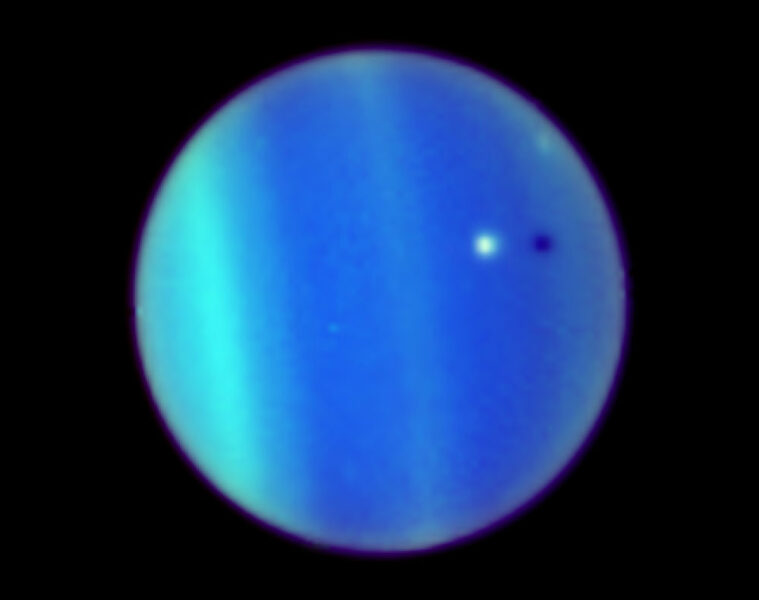The moons of Uranus exhibit heat signatures similar to dwarf planets in the Kuiper Belt — where the moons were likely born.

NASA / JPL / MPIA
The five large moons of the ice giant Uranus resemble the dwarf planets in the outer solar system, such as Pluto, Eris, and Haumea.
It’s not that all these worlds necessarily look the same, but they have similar heat signatures, according to a German-Hungarian team of astronomers. Like the large dwarf planets, the Uranian moons retain solar heat very well, and their night sides cool down relatively slowly – typical of the rough, icy surfaces of large, compact objects.
NASA’s Voyager 2 observed Miranda, Ariel, Umbriel, Titania, and Oberon in January 1986, but the spacecraft wasn’t equipped to observe the far-infrared wavelengths necessary to study their thermal behavior. Now, Örs Detre (Max Planck Institute for Astronomy, Germany) and his colleagues have analyzed archival calibration data obtained by the European Space Agency’s far-infrared Herschel Space Observatory, which operated between 2009 and 2013.
By carefully subtracting the ice giant’s signal, they were able to bring out the signals of its moons, which are thousands of times fainter at these wavelengths. “They mined a dataset that wasn’t originally intended for science. I think that’s neat,” says planetary scientist Meg Schwamb (Queens University Belfast), who wasn’t involved in the study.

NASA / ESA/ L. Sromovsky (Univ. of Wisconsin, Madison), H. Hammel (Space Science Institute) & K. Rages (SETI)
William Herschel discovered Titania and Oberon in 1781, the same year he found Uranus. “It was thus a pleasure that we could ‘discover’ Herschel’s Uranian moons with the help of the Herschel Space Observatory in the far infrared,” says study coauthor Ulrich Klaas.
Further analysis of the data also revealed the planet’s other three large moons. A comparison of the Herschel measurements with a detailed model developed by Thomas Müller (Max Planck Institute for Extraterrestrial Physics, Germany) revealed the thermal inertia of the surface material. The results were published September 14th in Astronomy & Astrophysics.
“The team has done an excellent job with a difficult data set,” comments Heidi Hammel (Association of Universities for Research in Astronomy), an expert on Uranus and Neptune. “These results are an important contribution to our understanding of Uranus’s moons.”
Schwamb agrees that it’s “a neat result with a cool technique”, but she’s not very surprised that the five large moons resemble the Kuiper Belt’s dwarf planets. After all, according to current understanding, objects like Pluto, Eris, and Haumea formed in the same region of the solar system as Uranus.
“Similar locations in the protoplanetary disk would mean similar conditions in terms of temperature, gas composition, et cetera,” she says, which suggests that the major Uranian moons would form with similar surface properties and compositions as the dwarf planets. By contrast, the many smaller outer moons of Uranus appear to be more like smaller Kuiper Belt objects: relatively loose aggregates of rock and ice.
But according to Hammel, the large, 98-degree obliquity of Uranus poses “a significant complication for the Uranian moon system. If that was driven by a catastrophic event (one leading theory), then that event would also have disrupted the primordial system of moons, with consequences that might be evident in the properties of their surfaces.”
A new space mission to Uranus – something NASA is currently considering – would shed new light on these issues. “It would really help us disentangle the many mysteries that lurk here,” says Hammel.
 0
0









Comments
You must be logged in to post a comment.